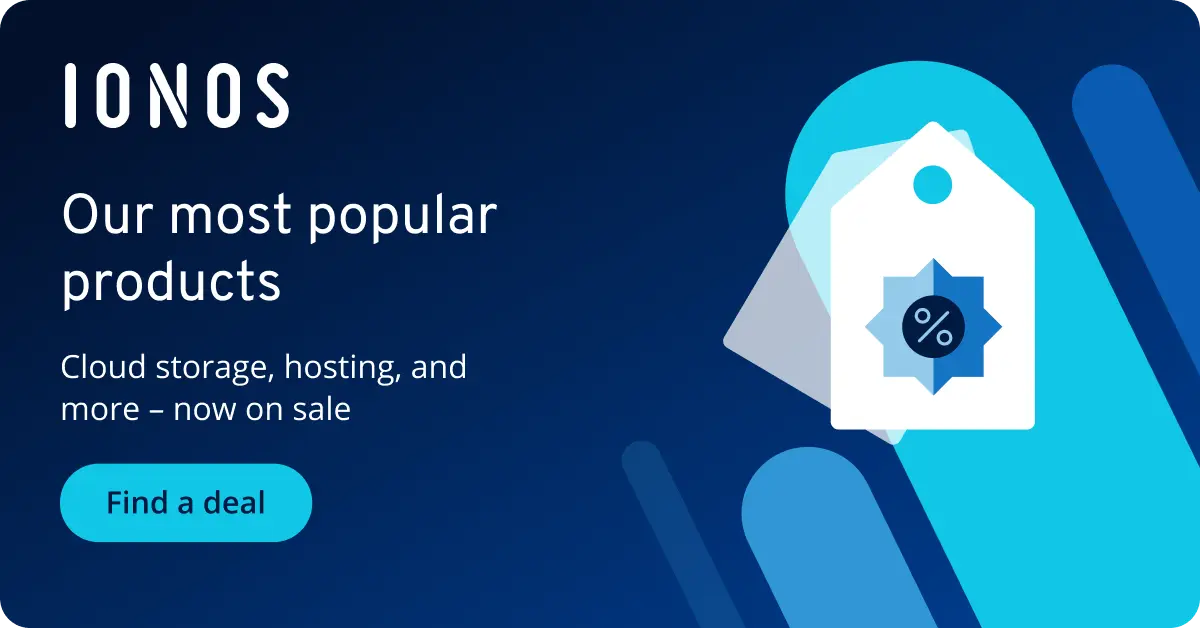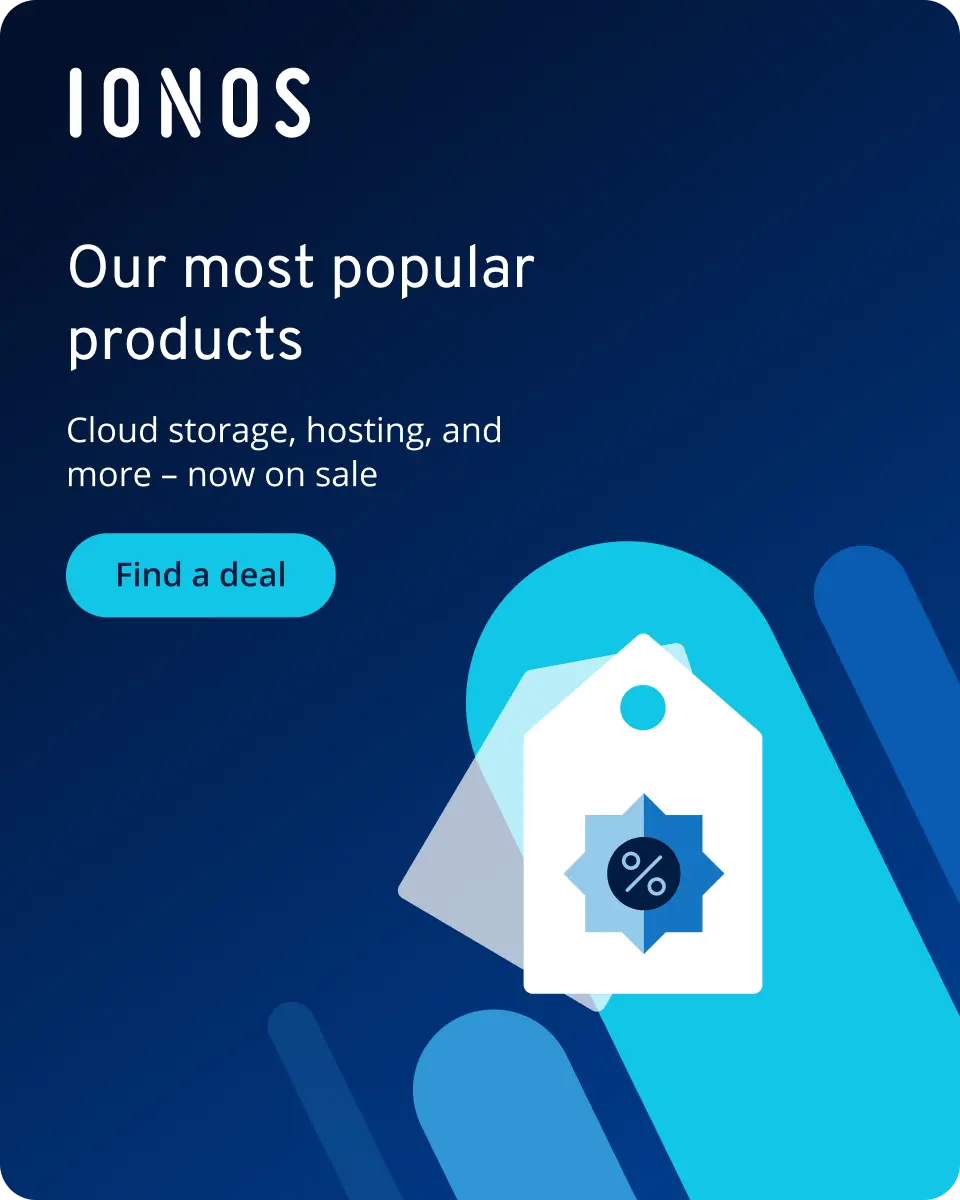What are cloud services?
Cloud services are a secure, low-cost and practical way of accessing infrastructure or software via a third party. Businesses, in particular, often benefit from using cloud infrastructure and services. Such services include IaaS, PaaS, SaaS, FaaS and XaaS.
- Cost-effective vCPUs and powerful dedicated cores
- Flexibility with no minimum contract
- 24/7 expert support included
Why are cloud services useful?
So-called “as a service” solutions are particularly popular in the field of cloud computing. While there are many differences between IaaS, PaaS, SaaS and related models, the core concept is similar: the goal is always to provide users with infrastructure, technologies, platforms, or software. The most common models among the various cloud services are the following:
IaaS
IaaS (infrastructure as a service). Users can access an IT infrastructure that is made available via the internet. This infrastructure can be storage, servers or network resources that are made available using virtual machines.
IaaS is a very widespread cloud service model and can be used by both businesses and individuals. By using IaaS you can avoid buying, storing and maintaining your own hardware. Anyone authorized to do so can access the data, which is protected by multiple security systems.
PaaS
PaaS (platform as a service). This type of cloud service is primarily used to develop web-based applications. Dev and programming teams as well as individuals who want to make their own apps use this type of service to program, test and manage applications. The service offers access to the hardware and software required for building applications and in doing so helps app creators save on costs and resources.
SaaS
SaaS (software as a service). SaaS users have access to programs and software collections. By accessing them via cloud services, users don’t have to buy and install them separately. These types of service are often used in customer relationship management (CRM), human resources management (HRM) and data management.
FaaS
FaaS (function as a service). This type of cloud service is used for development. FaaS providers make function packages available, which can then be purchased. Popular functions and functions that require a lot of computing power can be stored externally and used without limitations.
XaaS
XaaS (anything as a service). This umbrella term includes cloud services that follow a similar principle to the models mentioned above but don’t fit neatly into any of those categories—for example, offerings like Desktop as a Service (DaaS), Storage as a Service (STaaS), and many others. Various recovery, communication, or monitoring solutions.
What are the advantages of cloud services?
A powerful and well-suited cloud service solution offers users a wide range of benefits. These include the following in particular:
✓ Resources: Cloud services do not consume on-site resources. Since no additional hardware is required, there are virtually unlimited possibilities for expanding storage space.
✓ Cost: This leads to significant cost savings. Users only pay for the services they actually need and use. No additional investments are necessary.
✓ Flexibility: Cloud services can be tailored precisely to your needs. Cloud elasticity allows you to scale up capacity during peak times to handle increased loads. Modern cloud-native applications make especially efficient use of this flexibility.
✓ Security: Cloud services offer the highest level of cloud security. On the one hand, eliminating hardware reduces the risk of damage or loss. On the other hand, all servers come equipped with advanced security features to prevent unauthorized access, malware attacks, or data loss. Robust protection mechanisms, regular backups, and continuous monitoring ensure that your cloud services—and your data—are well protected.
✓ Accessibility and collaboration: Cloud services allow location-independent access to data and applications. This facilitates remote work, home offices, and international collaboration. Multiple users can access shared files at the same time, which enhances productivity.
✓ Scalability: Cloud services can be scaled horizontally (more servers) or vertically (stronger machines)—automatically or manually. This allows companies to respond to changing demands in real time without delays or interruptions.
What types of clouds are available?
There are different types of clouds available. These can be organized into different delivery models:
Public cloud
Public cloud services offer access to different computing resources using the public internet. To access the public cloud, users only need an internet-capable device.
Private cloud
While the public cloud is available to everyone, a private cloud is only available to a limited number of people. This type of cloud is, for example, used within a company and made available via the internet or a private network.
Hybrid cloud
A hybrid cloud is a mix of the public cloud and a private cloud or internal data center. This means data can be stored in different places depending on where it’s needed and how sensitive it is. A hybrid cloud combines different storage solutions, allowing it to be used seamlessly.
Multicloud
A multicloud is a combination of different cloud services that can be connected with each other or function independently of each other. In a multicloud architecture, at least two clouds are used. This can include multiple clouds of the same type or a combination of different types (e.g., public and private) of clouds.

